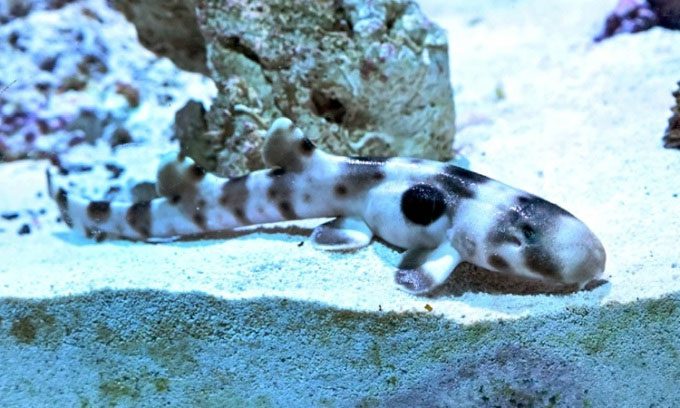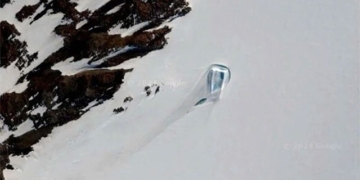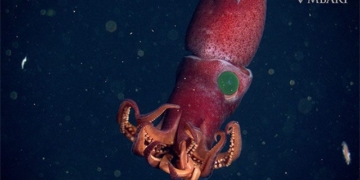A female shark at Brookfield Zoo in Illinois gave birth to a pup despite not having contact with a male shark for the past four years.
The birth took place on August 23 after a five-month gestation period and is the second recorded case of a shark giving birth without fertilization in captivity, reported Live Science on November 9. Animal care staff have been raising the pup separately for two months to monitor its health. The pup, currently measuring 13 to 15 cm, will soon be on display in the “Living Coasts” area of the zoo.

The epaulette shark pup appears healthy and is feeding well. (Photo: Brookfield Zoo).
Parthenogenesis is a form of asexual reproduction that occurs in sexually reproducing species under normal conditions. This phenomenon has been observed in birds, sharks, lizards, and snakes kept in captivity. In June 2023, scientists witnessed parthenogenesis in crocodiles for the first time. Female species capable of parthenogenesis can lay eggs containing all the necessary genetic information. Mammals cannot reproduce asexually as they require genes from sperm.
The mother shark arrived at Brookfield Zoo in 2019 from New England Aquarium. Since then, she has not lived with any males. She matured last year at the age of seven and began laying 2 to 4 eggs each month. One of those eggs developed into a fetus without the need for fertilization from male genetic material.
According to Mike Masellis, an animal care expert at Brookfield Zoo, pups born through parthenogenesis can be quite fragile. However, the newly born epaulette shark appears to be relatively strong. It is feeding well on small fish eggs, chopped squid, and a variety of other fine foods.
The epaulette shark primarily operates at night and can grow up to 1.1 meters long, according to the Australian Museum. They inhabit the Great Barrier Reef off the coast of Queensland, Australia, from the northern tip of the Cape York Peninsula to the Capricorn Islands and Bunker Group. This elongated shark species is named for the large spots above its pectoral fins, which help it appear larger. Epaulette sharks can “walk” short distances along the sandy ocean floor, using their strong pectoral fins to move.


















































